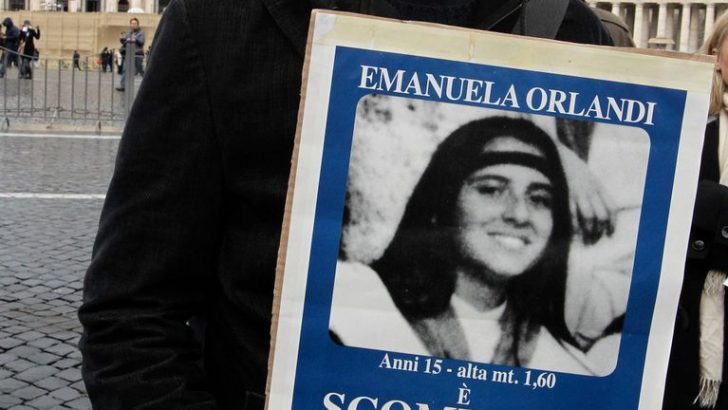The Holy See says a Vatican judge has formally closed an investigation on missing Italian teenager, Emanuela Orlandi, which was opened last year.
The investigation authorised the opening of two tombs in the cemetery of the Teutonic College, which sits on Vatican-owned property, at the request of the family of the girl who disappeared in Rome back in 1983.
Scientific tests carried out in July 2019 on bone fragments, found in connection to the investigation, revealed the bones to be too old to be Orlandi’s remains, according to Vatican statements at the time. “Hence the request for dismissal [of the investigation], that closes one of the chapters of the sad incident, in which Vatican authorities have offered, since the beginning, the widest collaboration,” stated a press release last week.
The Vatican statement said the dismissal of the investigation allows the Orlandi family to carry out further investigations on discovered bone fragments privately should they wish to do so.
Speculation
Orlandi was the daughter of an envoy of the Prefecture of the Pontifical House and a citizen of Vatican City State.
Her disappearance at the age of 15 in June 1983 has been one of Italy’s biggest unsolved mysteries and, since it occurred, the subject of international intrigue, including speculation about the Vatican’s role.
The Vatican City State’s promoter of justice authorised the opening of the tombs of two noblewomen in 2019 after Orlandi’s family received an anonymous note alleging a clue to the girl’s disappearance could be found in the tombs next to a statue of an angel in the Teutonic College cemetery.
The tombs were found to be empty of any human remains when opened on July 11, 2019. Two ossuaries filled with partial bones and bone fragments were subsequently found under the pavement of a room in the college adjacent to the tombs.
The bone fragments were analysed by forensic anthropologist Giovanni Arcudi and his staff in the presence of an expert appointed by the Orlandi family.
On July 29, 2019 the Vatican communicated that the bones were all found to pre-date the 20th Century – and therefore could not be those of the missing girl.



